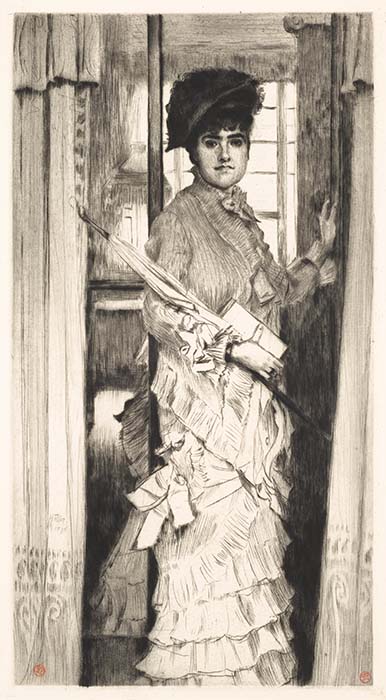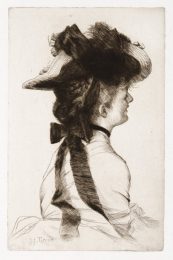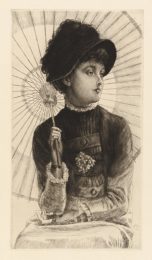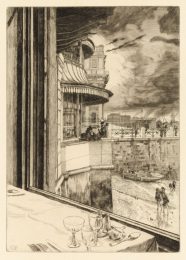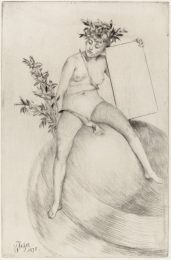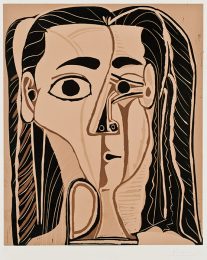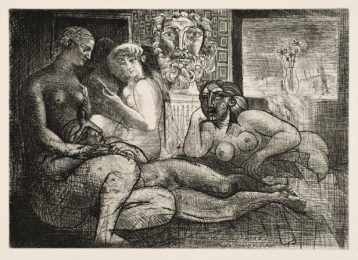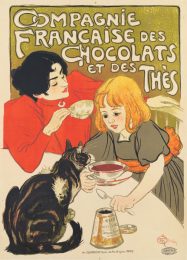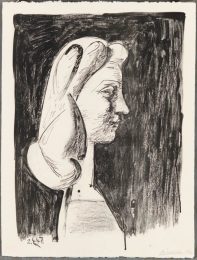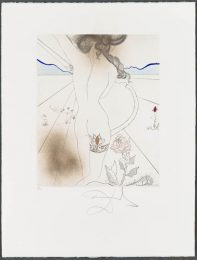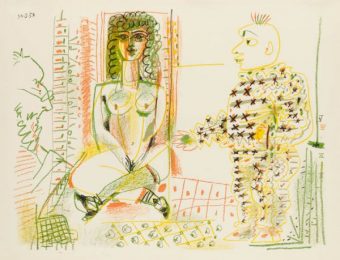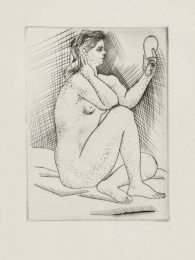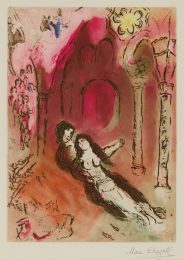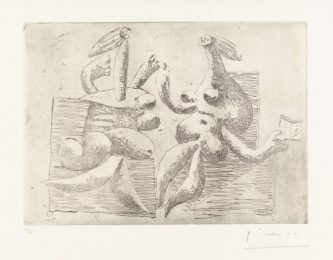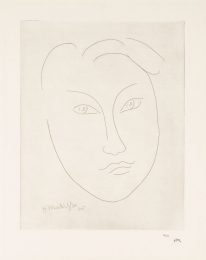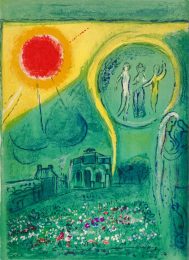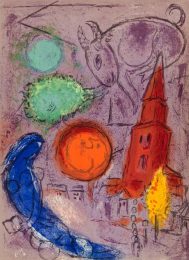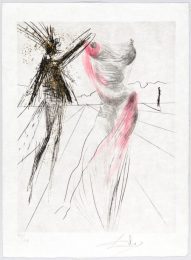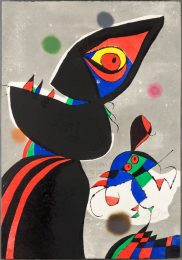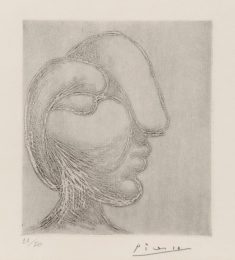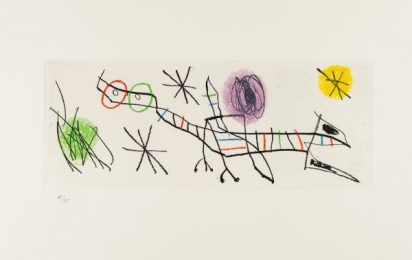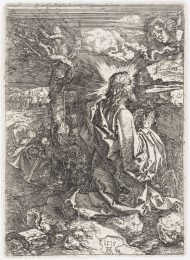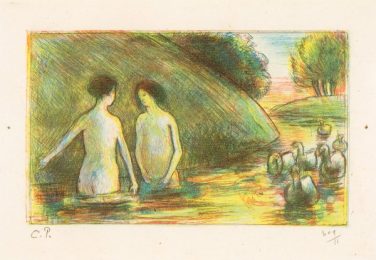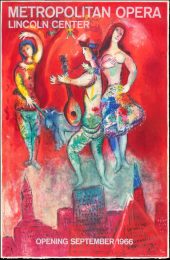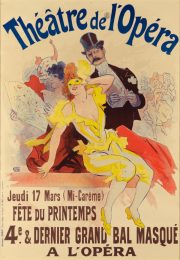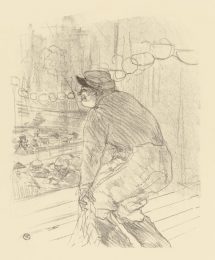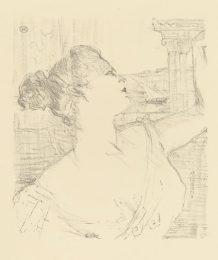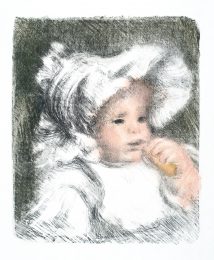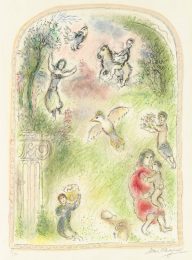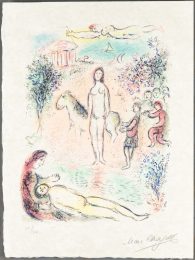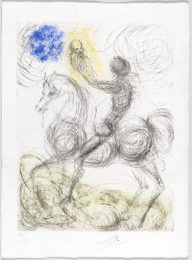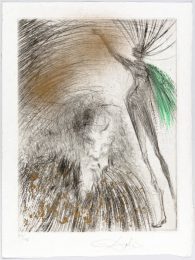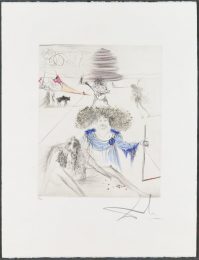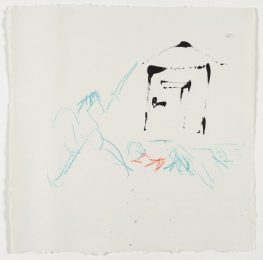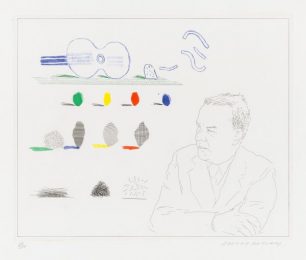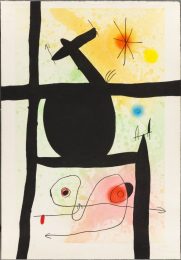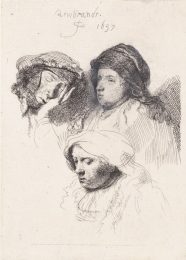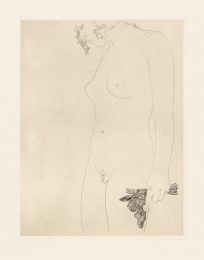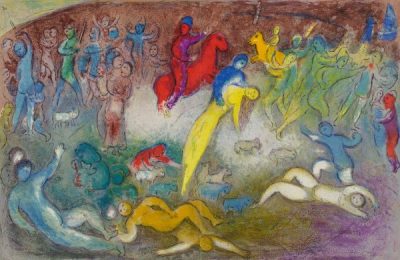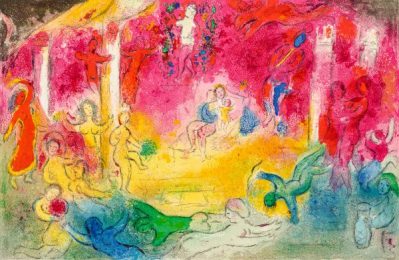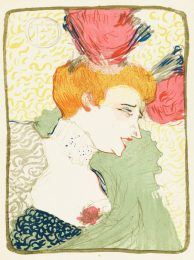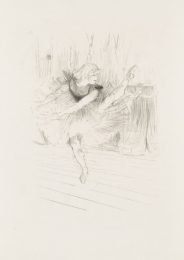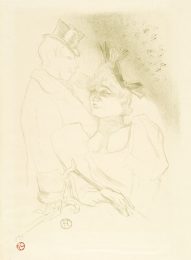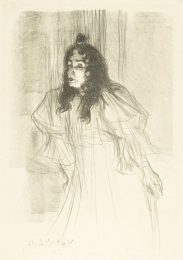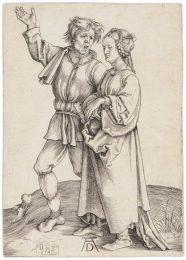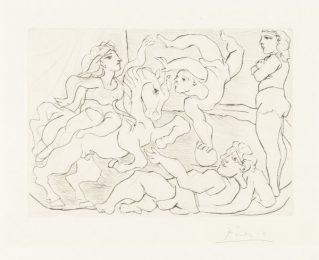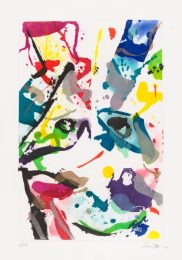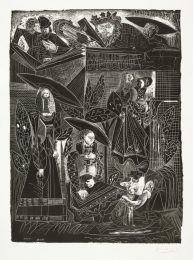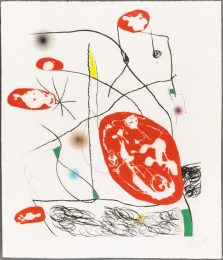Details — Click to read
Original drypoint printed in black ink on laid paper.
Signed and dated in the plate on the curtain lower left J.J. Tissot / 1876.
A richly printed impression of the definitive state of this extremely rare etching, with touches of rich burr throughout, from the edition of only 50 (25 issued in Ten Etchings, and 25 issued separately). One of ten plates comprising the suite Ten Etchings. Also bearing the artist’s red monogram stamp (Lugt 1545) in two places, lower right and lower left, which Tissot affixed only to those impressions from any given edition which he considered to be the finest, he reserved these impressions for his own collection.
Catalog: Wentworth 23; Tissot 17; Béraldi 16.
Platemark: 14 5/8 x 8 inches
In excellent condition, printed on a sheet with wide margins
Literature regarding this artwork: Krystyna Matyjaszkiewicz, James Tissot, Phaidon Press and Barbican Art Gallery, London, 1984, no. 75, p. 112 (ill.).
The subject of this drypoint, Miss Lloyd, was probably a professional model or a friend of Tissot’s who posed for him, for the dress appears often in his work and must have been a studio prop. Tissot is known to have painted portraits like this, probably to send to exhibitions, as a means of attracting commissions. In that, he was successful, for he was an extremely popular portrait painter throughout his life. Until the 1880’s, when his portraits grew more straight-forward, Tissot always sought to stamp them with a modernité summed up in Degas’ desire to “faire des portraits des gens dans des attitudes familières et typiques, surtout donner à leur figure le même choix d’expression qu’on donner à leur corps” (to make portraits of people in familiar and typical attitudes, especially to give to their figure the same choice of expression as one gives to their body).

